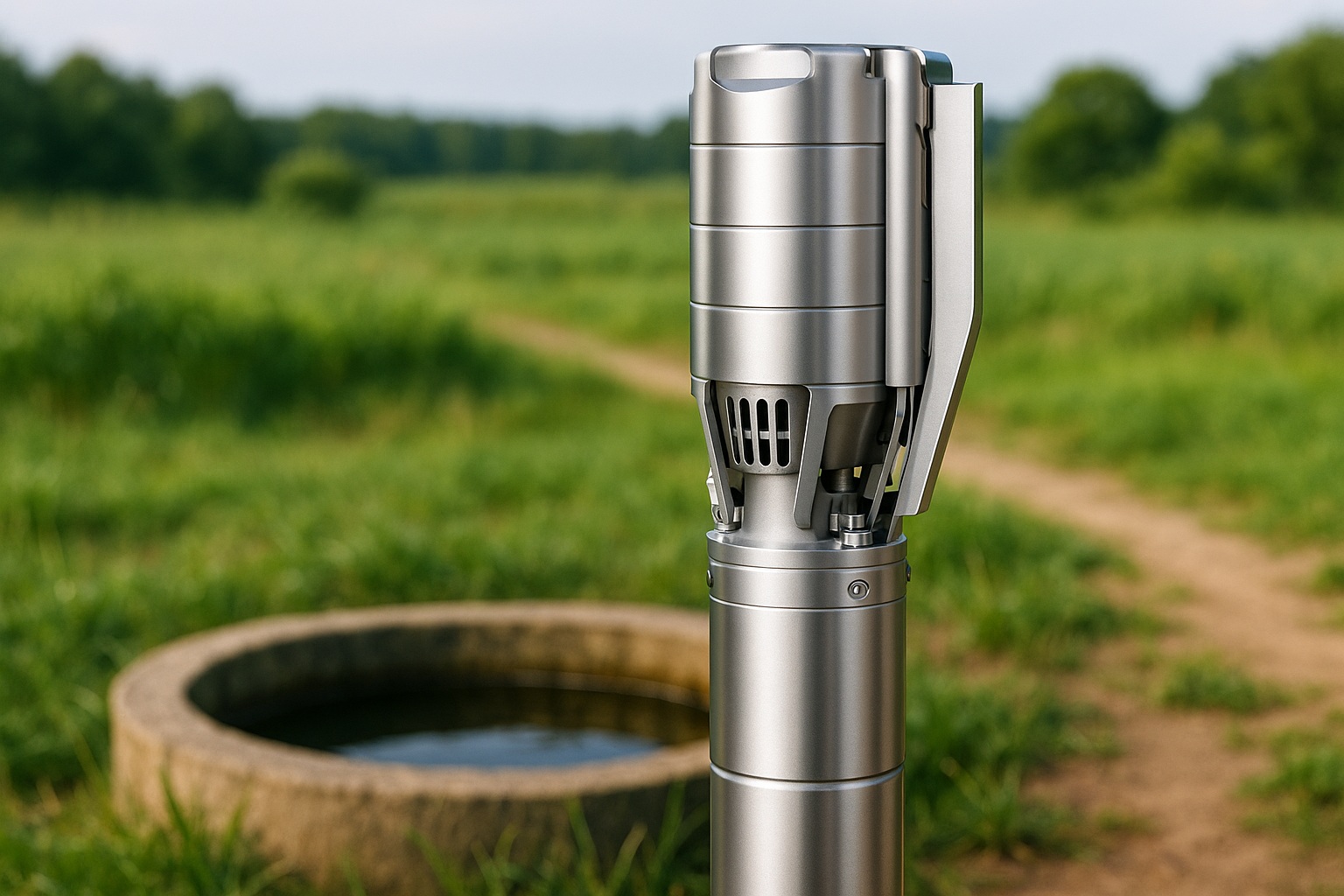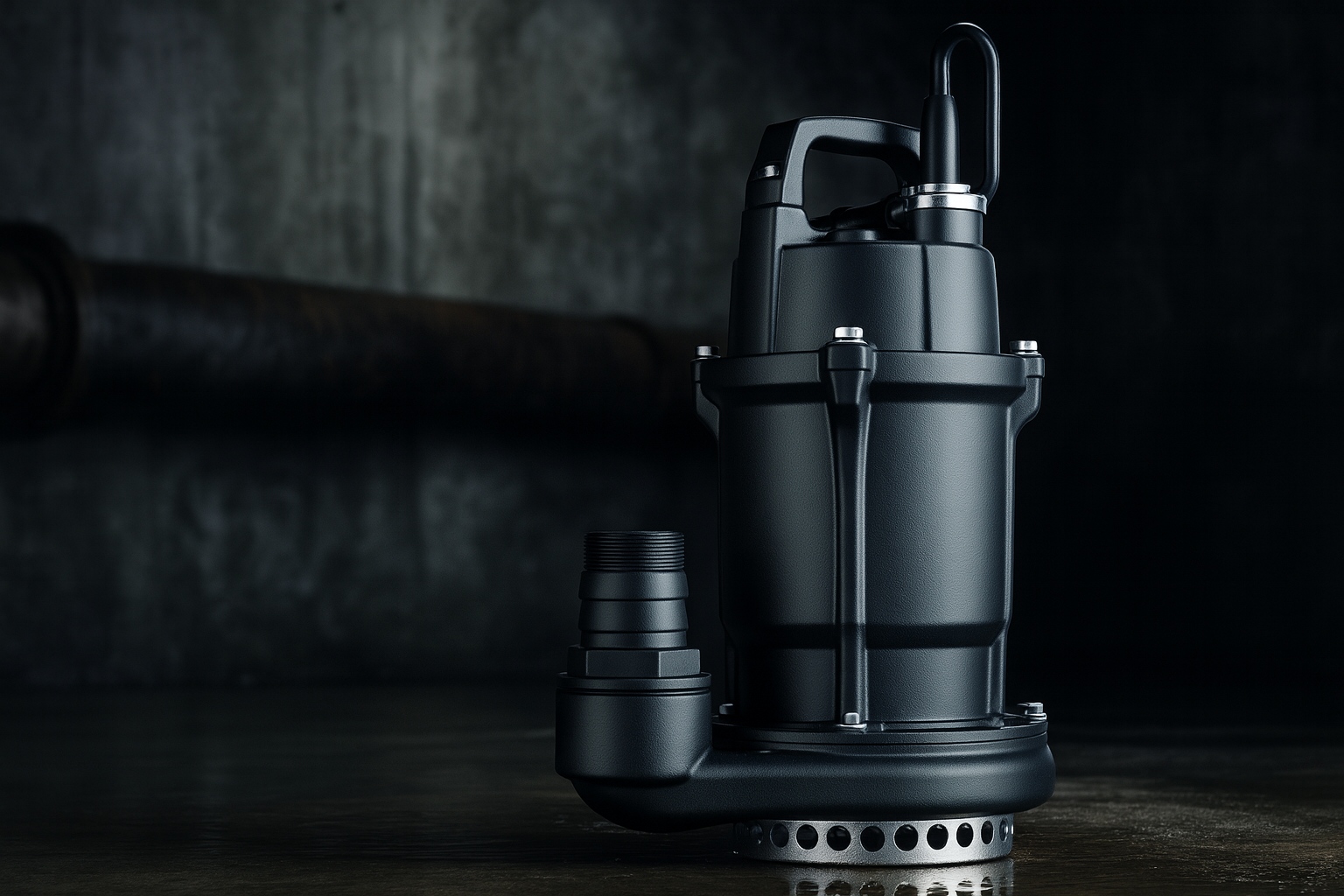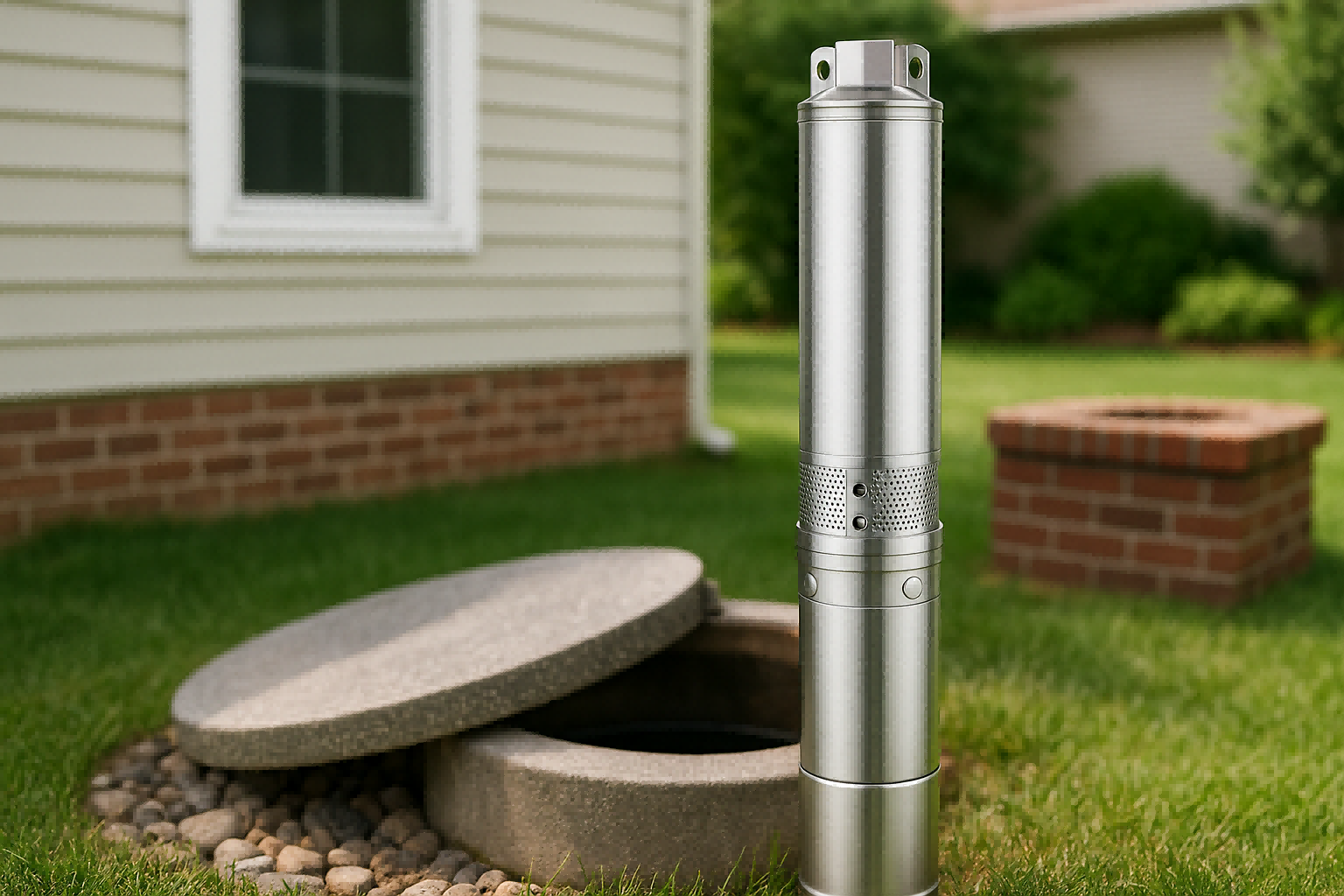Struggling to find a single flow rate for a 2 HP pump?
This uncertainty can lead to choosing the wrong pump for your system.
Understand the factors that determine its true performance before you buy.
A 2 HP submersible pump does not have one single flow rate.
Its output, measured in litres per minute (L/min), varies widely from 30 to over 200 L/min.
This range depends entirely on the pump's design and the vertical distance it must lift the water, known as the head.

Choosing the right pump is a critical decision for any water system project.
Many people look at horsepower as the main indicator of performance.
This is a common mistake.
Horsepower tells you about the motor's power, not the pump's hydraulic output under specific conditions.
A 2 HP motor can be paired with many different hydraulic designs, each optimized for a different task.
Understanding this difference is the first step toward selecting a pump that will perform reliably and efficiently for years.
This guide will break down the relationship between power, flow, and head.
We will explore why a single horsepower rating can result in dramatically different real-world outcomes.
This will equip you with the knowledge to analyze pump specifications like an expert.
Let's dive into the details that truly define a pump's capability.
Understanding High-Head, Low-Flow Pumps
Are you planning a deep well installation?
Using a standard pump in a deep well application will result in low pressure or no water at all.
You need a pump specifically designed to push water over great vertical distances.
Pumps designed for high-head applications prioritize pressure over volume.
A 2 HP model built for deep wells might deliver only 30-65 litres per minute.
However, it can lift that water to incredible heights, sometimes over 200 meters, ensuring consistent supply from deep underground sources.
When you need to source water from deep underground, the laws of physics present a significant challenge.
Every meter of vertical lift, or "head," adds back-pressure that the pump must overcome.
This is where the pump's internal design, specifically the impeller and volute, becomes critical.
Think of it from an engineering perspective.
High-head pumps are specialists.
They are not designed to move massive volumes of water quickly at the surface.
Their purpose is to generate immense pressure.
The Role of Impeller Design
The impeller is the rotating component that transfers energy from the motor to the water.
Its design directly shapes the pump's performance curve.
- Tightly Spaced Vanes: High-head pumps often use multi-stage designs with smaller, tightly spaced impellers.
- Increased Pressure per Stage: Each stage acts like a separate pump, adding more pressure to the water passed to it from the stage below. This compounds the pressure, allowing the pump to achieve very high heads.
- Reduced Flow Channel: The channels within these impellers are narrower. This design choice constricts the volume of water that can pass through at any given moment, resulting in a lower flow rate.
Calculating Performance at Depth
A pump's performance is not a single number.
It is a curve showing the relationship between flow rate and total dynamic head (TDH).
For a deep well pump, this is crucial.
Consider this example data:
| Total Head (Meters) | Expected Flow Rate (L/min) | Application Suitability |
|---|---|---|
| 50 | 60 | Shallow well, high pressure |
| 150 | 45 | Medium-depth well |
| 250 | 30 | Very deep well |
As the table shows, even for the same pump, the flow rate decreases as the head increases.
A 2 HP motor provides the power, but the hydraulic engineering dictates how that power is used.
For a 271-meter well, you need a pump that can generate enough pressure to overcome that height and still deliver a usable flow of 30 L/min at the surface.
A general-purpose pump would stop producing any flow long before reaching that depth.
Understanding High-Flow, Low-Head Pumps
Do you need to drain a flooded area or transfer large volumes of water quickly?
Using a deep-well pump for this task would be incredibly slow and inefficient.
You need a pump that prioritizes moving water volume over generating pressure.
Pumps designed for high-flow applications excel at moving large quantities of water over short vertical distances.
A 2 HP model built for this purpose might deliver over 200 litres per minute.
However, its ability to push water upwards is limited, often to a maximum head of 60 meters or less.
In applications like dewatering, irrigation, or filling large tanks, the primary goal is volume, not height.
The pump's job is to move as much water as possible from point A to point B with minimal restriction.
These pumps are the sprinters of the water world, whereas high-head pumps are the marathon runners.
The engineering philosophy behind their design is completely different.
They are built to maximize flow rate, even at the expense of pressure-generating capability.
This makes them highly effective for their specific purpose but unsuitable for deep well applications.
The Science of a High-Flow Impeller
The impeller in a high-flow pump looks very different from one in a high-head pump.
This design is fundamental to its function.
- Wider Vanes and Channels: High-flow impellers have larger, more open vanes. This creates wider channels that allow a greater volume of water to pass through with each rotation.
- Fewer Stages: These pumps are typically single-stage. They do not need the compounding pressure effect of a multi-stage design. The focus is on a single, powerful push of a large volume of water.
- Optimized Volute Casing: The pump's casing, or volute, is shaped to efficiently collect the water from the wide impeller and discharge it with minimal friction, preserving the flow rate.
Performance in Low-Head Scenarios
The performance curve for a high-flow pump shows a dramatic drop in flow as the head increases.
Its efficiency is highest when it is working against little to no vertical resistance.
Let's look at a typical performance profile for a 2 HP high-flow model.
| Total Head (Meters) | Expected Flow Rate (L/min) | Application Suitability |
|---|---|---|
| 5 | 200+ | Draining, flood control |
| 30 | 120 | Tank filling, transfer |
| 60 | 40 | Maximum operating limit |
This data clearly illustrates the trade-off.
At a very low head of just 5 meters, the pump performs at its peak, moving a massive amount of water.
As you ask it to push water higher, to 30 meters, the flow rate is nearly halved.
By the time it approaches its maximum head of around 60 meters, the flow has diminished significantly.
Trying to use this pump for a 100-meter well would result in zero water output.
Finding Balance with General-Purpose Pumps
Need a reliable pump for a home, farm, or small commercial building?
Specialized high-head or high-flow pumps might be overkill or simply ineffective for your needs.
You require a versatile pump that offers a solid mix of both pressure and volume.
General-purpose 2 HP submersible pumps are the most common type.
They provide a balanced performance, typically delivering between 80 and 140 litres per minute.
This makes them suitable for a wide range of everyday applications, from residential wells to irrigation systems with moderate head requirements.
For the majority of water supply scenarios, you do not need extreme performance at one end of the spectrum.
You need a dependable workhorse.
This is the role of the general-purpose submersible pump.
Engineers design these pumps to operate efficiently across a broad range of head and flow conditions.
They are the jack-of-all-trades in the pump world.
They may not be able to reach the depths of a specialized deep-well pump.
They also may not move the massive volumes of a dewatering pump.
However, they excel at providing consistent water supply for homes, livestock, or small-scale agriculture from wells of a moderate depth.
The Hybrid Design Approach
The components in a general-purpose pump represent a compromise between the two extremes.
This balance is achieved through careful engineering choices.
- Moderate Impeller Design: The impellers are neither excessively narrow nor exceptionally wide. They use a multi-stage design, but with fewer stages than a high-head pump. This provides a good combination of pressure generation and flow capacity.
- Efficient Motor Pairing: The 2 HP motor is matched to this hydraulic design to ensure it operates within its most efficient power band under typical conditions, which are usually wells between 30 and 70 meters deep.
- Broad Efficiency Curve: Unlike specialized pumps that are most efficient in a narrow band, general-purpose pumps are designed to be reasonably efficient across a wider section of their performance curve.
Matching the Pump to Your System
To select the right general-purpose pump, you must first calculate your system's requirements.
The key is to find a pump whose "best efficiency point" (BEP) aligns with your daily operational needs.
Here is a simplified process:
- Calculate Total Head: This includes the static lift (vertical distance from water level to discharge) plus friction losses in your pipes.
- Determine Required Flow Rate: How much water do you need? This depends on the number of fixtures, irrigation zones, or other uses. A typical home might require 40-60 L/min.
- Consult the Performance Curve: With your required head and flow rate, you can now look at a pump's performance chart.
| Pump Model | Flow Rate at 40m Head (L/min) | Flow Rate at 60m Head (L/min) | Best For |
|---|---|---|---|
| Model A | 140 | 110 | Shallow wells, high demand |
| Model B | 100 | 80 | Average residential well |
| Model C | 80 | 50 | Deeper residential well |
Choosing Model B for a 60-meter well needing 80 L/min means the pump will run at its optimal point.
This ensures longevity, reduces energy consumption, and provides reliable performance.
The Importance of the Pump Performance Curve
How can you be certain a pump will meet your exact needs?
Relying on horsepower or marketing claims can lead to costly system failures.
You need a precise, data-driven tool to ensure the right choice.
The pump performance curve is the most crucial piece of technical data.
This graph, provided by the manufacturer, shows the exact relationship between the flow rate (litres per minute) and the total head (meters).
It removes all guesswork, allowing you to see precisely how a specific pump model will perform in your unique system.
From a professional engineering standpoint, a pump does not exist without its performance curve.
This graph is the pump's resume.
It tells you everything about its capabilities, limitations, and efficiency.
Horsepower is just a single specification, but the curve tells the whole story.
It is a commitment from the manufacturer, detailing how their product will behave under a load.
Ignoring this data is like buying a truck without knowing its towing capacity or fuel economy.
You might have enough engine power, but if the gearing and chassis are wrong for the job, you will not get the desired results.
Learning to read this simple graph is the most important skill for anyone involved in designing or installing a water pump system.
How to Read a Pump Curve
A standard pump curve plots several key metrics.
Understanding them is straightforward.
- X-Axis (Horizontal): This axis always represents the flow rate, usually in litres per minute (L/min) or cubic meters per hour (m³/h).
- Y-Axis (Vertical): This axis represents the total head, measured in meters (m) or feet. This is the pressure the pump can generate.
- The Main Curve (Head vs. Flow): This is the primary line on the graph. It slopes down from left to right. It shows that as the required head increases, the flow rate the pump can deliver decreases.
- Efficiency Curve: Often shown as a separate, arched line, this indicates the pump's efficiency (as a percentage) at different points along its operating curve. The peak of this arch is the Best Efficiency Point (BEP).
- Power Curve: This line shows how much power the motor consumes (in kW or HP) at different flow rates.
Applying the Curve to a Real-World Scenario
Let's put this into practice.
Imagine your system requires a flow of 100 L/min at a total head of 55 meters.
- Locate Your Head: Find 55 meters on the vertical Y-axis.
- Move Horizontally: Trace a horizontal line from 55 meters across the graph until it intersects the main performance curve.
- Drop Vertically: From that intersection point, drop a vertical line down to the horizontal X-axis.
- Read the Flow Rate: The point where your vertical line lands on the X-axis is the exact flow rate the pump will deliver at that head.
If that point is at or very near 100 L/min, and it's close to the pump's BEP, you have found a perfect match.
If it lands at 70 L/min, this pump is undersized.
If it lands at 150 L/min, it may be oversized, wasting energy.
This simple process eliminates mistakes and ensures your system is optimized for performance and efficiency.
Conclusion
A pump’s horsepower is only a measure of motor power.
The actual water output depends on the pump's hydraulic design and the system's head, which is why a performance curve is essential.
FAQs
What is the flow rate of a 2hp pump?
A 2hp pump's flow rate varies widely, from 30 L/min for high-head models to over 200 L/min for high-flow versions, depending on design and head pressure.
How many litres per minute does a 2 HP water pump?
A 2 HP water pump can deliver anywhere from 30 to 200+ litres per minute. The exact amount depends on the pump's specific model and operating head.
How much water can a 2hp submersible pump?
A 2hp submersible pump's capacity depends on its design. High-pressure models might lift 30 L/min very high, while low-pressure models can move over 200 L/min.
How do I calculate the flow rate of my water pump?
The best way is to consult the manufacturer's performance curve. This graph shows the exact flow rate at different head pressures for your specific pump model.
Is higher HP pump better?
Not necessarily. Higher HP means more power, but the pump’s hydraulic design determines its suitability. Matching the pump's performance curve to your system's needs is more important.
What is the difference between head and flow rate?
Head is the vertical distance a pump can lift water, measuring pressure. Flow rate is the volume of water it can move per unit of time.
Why is my pump's flow rate so low?
Low flow can be caused by a head that is too high for the pump, clogged pipes, an undersized pump, or mechanical wear on the impeller.
Can I use a 2HP pump for my house?
Yes, a general-purpose 2HP pump is often suitable for residential wells. However, you must confirm it meets your home's specific head and flow requirements.








